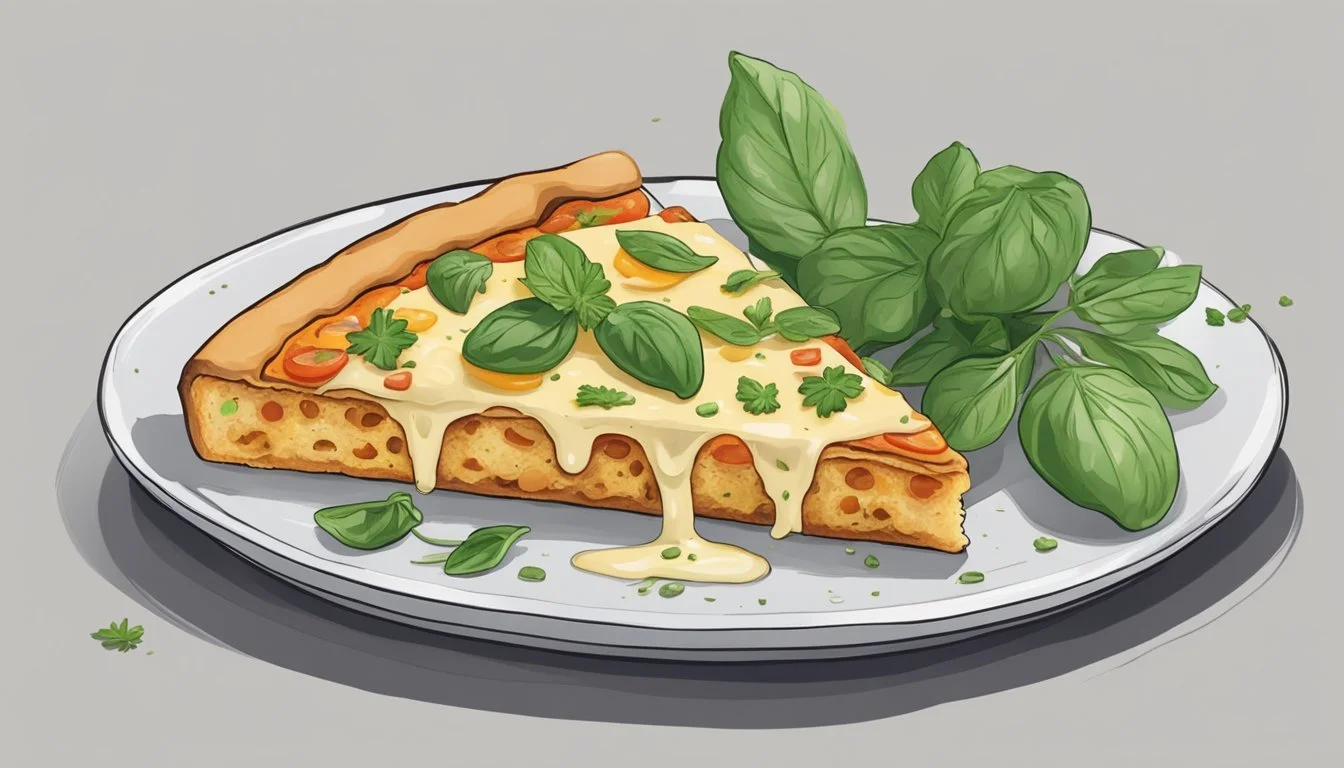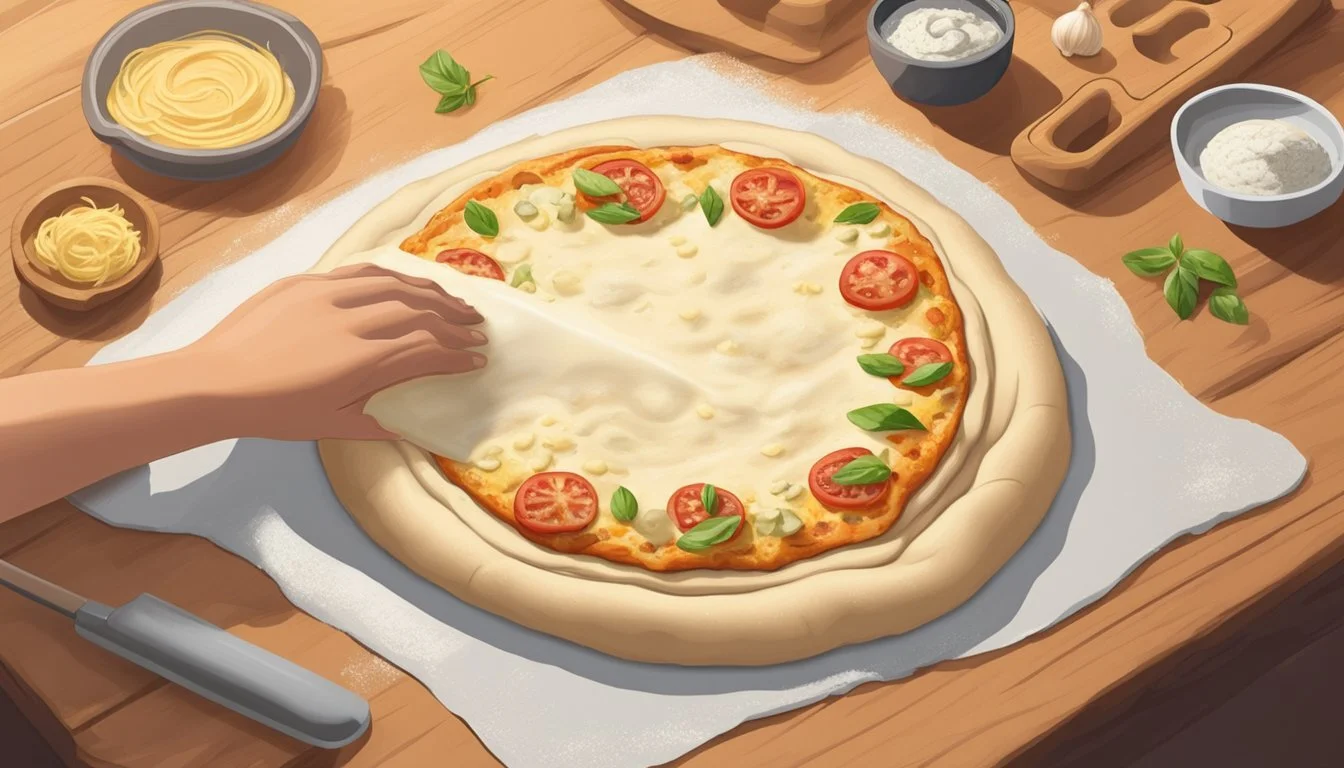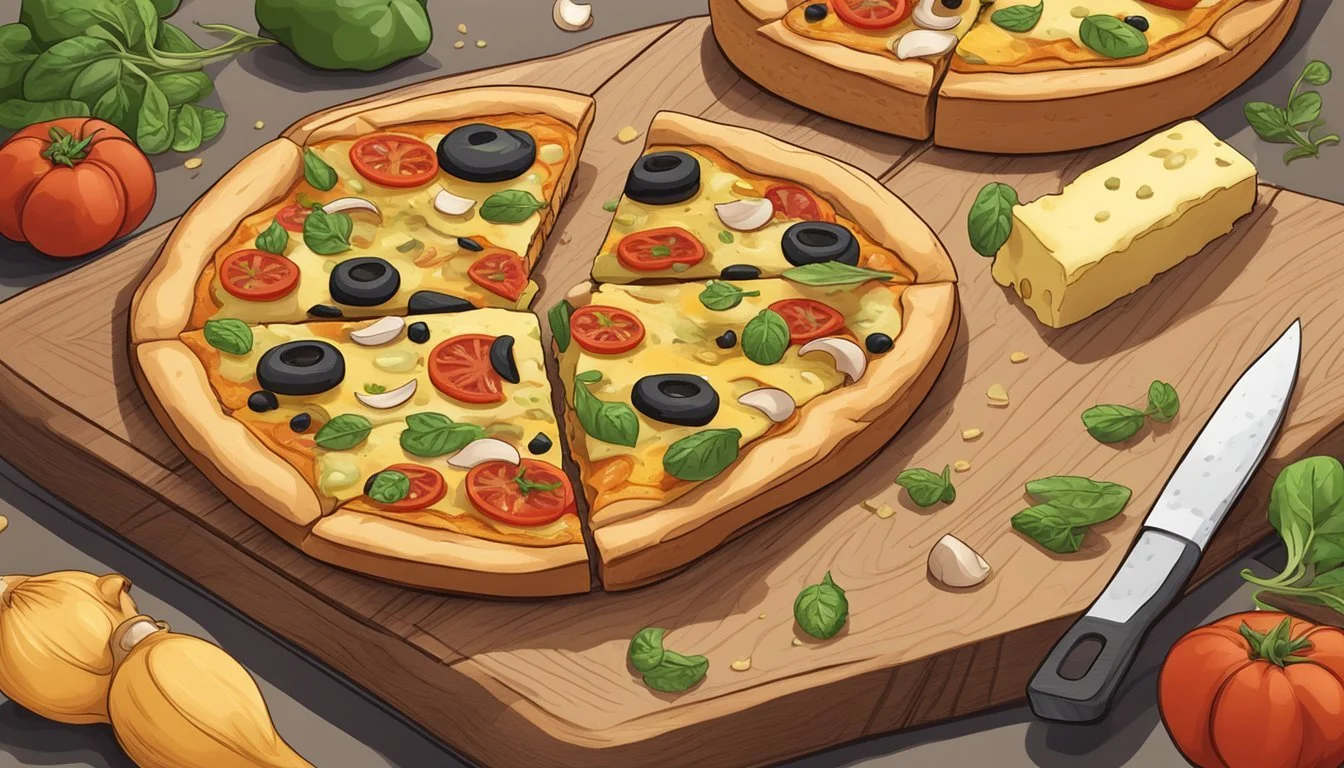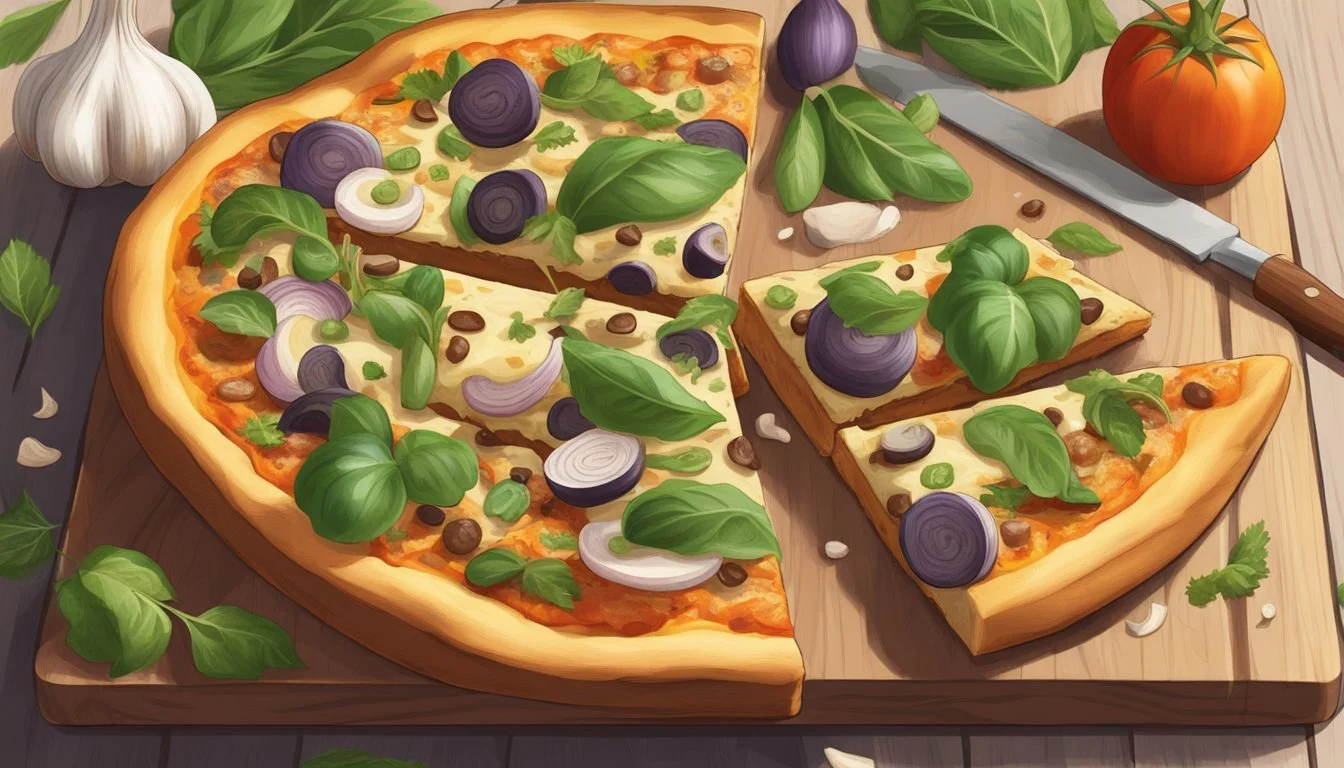Is Garlic Bread Pizza Vegan?
Decoding Ingredients for Plant-Based Diets
Garlic (What wine goes well with garlic?) bread (What wine goes well with bread?) pizza strikes a delightful balance between two beloved comfort foods. It may not be inherently vegan due to traditional recipes containing dairy cheese and butter, but the rise of plant-based alternatives has led to vegan adaptations that do not compromise on flavor. These adaptations often use vegan mozzarella cheese and butter substitutes infused with garlic to recreate the richness and taste that characterize the classic garlic bread and pizza combination.
Vegan garlic bread pizzas are a testament to the versatility and creativity within plant-based cuisine. Critical to their success are ingredients such as vegan butter mixed with freshly minced garlic for the base, and dairy-free cheese—ranging from homemade cashew-based mozzarella to commercially available shreds. The toppings can include a variety of vegetables like cherry tomatoes, bell peppers, and spinach, which not only contribute to the taste but also add a visual appeal.
In order to categorize garlic bread pizza as vegan, all ingredients from the bread base up to the final garnish must be sourced from plants. This includes ensuring that the bread dough is free from honey, eggs, and milk products typically found in some bread recipes, and that any additional flavorings or toppings are likewise free of animal-derived components. With these considerations, garlic bread pizza can quite satisfyingly fit into a vegan diet.
Understanding Veganism
Veganism is more than a diet—it is a lifestyle choice that excludes all forms of animal exploitation and cruelty. It emphasizes the use of plant-based ingredients, and its application in the kitchen involves finding alternatives that align with its ethics and nutritional needs.
Defining a Vegan Diet
A vegan diet strictly avoids all animal products, including dairy, eggs, and honey. Instead, individuals who follow a vegan diet make choices that are plant-based and cruelty-free. For a food product to be considered vegan, it must contain:
No meat, poultry, or fish
No dairy products (like milk or cheese)
No eggs or bee products (like honey)
No ingredients derived from animal sources (gelatin, some food colorings, etc.)
In terms of nutrition, a vegan diet often relies on the following:
Proteins: from legumes (beans, lentils), nuts, seeds, and soy products (tofu, tempeh)
Calcium: from plant milks (fortified almond, soy, rice milk), tofu, and leafy greens
Iron: from legumes, tofu, nuts, seeds, and whole grains
Vitamins B12 and D: often through fortified foods or supplements, as these are not commonly found in a plant-based diet
Common Ingredients in Vegan Cooking
Vegan cooking involves a variety of ingredients that replicate the flavors and textures otherwise provided by animal products:
Vegan butter: made from plant-based oils and often fortified with vitamins, functions similarly to dairy butter in recipes.
Nutritional yeast: a deactivated yeast that adds a cheesy or nutty flavor, rich in B-vitamins, often used in "cheesy" sauces or as a topping.
Olive oil: used as a cooking fat, for dressings, and to add richness to dishes.
Dairy-free alternatives: like coconut milk, almond milk, and soy milk, used in place of cow’s milk.
Vegan cheese: made from nuts, soy, or root vegetables, used to replicate cheese in vegan pizza and other dishes.
In creating dishes like vegan garlic bread pizza, chefs use combinations of these ingredients, ensuring the final product aligns with vegan standards while still providing a satisfying, delicious experience. Garlic, a key component, is naturally vegan and imparts the bold flavor that is central to garlic bread. Vegan mozzarella cheese and tomato sauce, staples in vegan pizza, are applied generously over a vegan-friendly base, making a dish that is both entirely plant-based and flavorful.
Components of Garlic Bread Pizza
Garlic bread pizza combines the seasoned, buttery profile of garlic bread with the hearty toppings of traditional pizza. This makes for an indulgent and savory dish that can be adapted to suit vegan diets with appropriate ingredient substitutions.
Garlic Bread Base
The base of garlic bread pizza starts with garlic bread, which typically consists of a baguette or other types of bread, butter, garlic, and herbs. For a vegan version, one substitutes dairy butter with a plant-based alternative. Minced garlic, garlic powder, or roasted garlic cloves are mixed with vegan butter to enhance the flavor. Here's a basic vegan garlic bread base recipe:
Vegan butter, softened
Minced garlic or garlic powder
Chopped fresh parsley
Baguette or preferred bread
Toppings and Variations
On top of the sumptuous garlic bread base, a variety of toppings can be added to create a delightful garlic bread pizza. A typical topping includes marinara sauce, which serves as the pizza sauce. Additional toppings might include:
Sliced olives
Spinach and mushrooms
Chopped fresh or canned tomatoes
Thinly sliced red onions
Bell peppers
These toppings are chosen not just for flavor but also for their nutritional value and visual appeal, adding bursts of color and texture to the dish.
Exploring Cheese Alternatives
Cheese is an essential element in giving pizza its characteristic melt and stretch, but for a vegan garlic bread pizza, dairy cheese is off the table. Instead, vegan alternatives such as vegan mozzarella or vegan parmesan cheese are used. These can be store-bought or homemade from various plant-based ingredients such as cashews, almonds, or even tapioca starch for stretchiness. The intention is to mimic the satisfying experience of melted cheese without any animal products.
The Pizza-Making Process
Crafting a vegan garlic bread pizza requires meticulous attention to detail, especially in the dough making, baking, and topping application stages. These steps are vital in achieving the desired flavors and textures.
Creating Homemade Pizza Dough
One begins their pizza culinary journey with the creation of homemade pizza dough. Vegan pizza dough typically contains flour, yeast, salt, and water. The dough should be mixed until well combined, and then kneaded with a clean hand or on a floured surface until smooth and elastic; this usually takes around 5-6 minutes. After kneading, it's crucial to let the dough rest until it doubles in size, which allows the gluten structure to develop, leading to a softer and fluffier crust.
Ingredients for Vegan Pizza Dough:
Flour
Active dry yeast
Salt
Water
Baking Techniques and Tips
Once the dough rests, it needs to be shaped. A rolling pin can help in flattening the dough into the classic pizza base. For an ideal bake, preheat the oven along with a pizza stone or a baking sheet turned upside down. Preheating ensures a uniformly hot surface, which contributes to a crispier crust. The baking time varies, but one should strive for a golden brown edge and a thoroughly cooked middle. The ideal temperature for baking pizza is around 475°F (246°C), and it normally takes between 10 to 15 minutes, depending on the oven's efficiency and crust thickness.
Garlic Butter Topping Application
For the quintessential garlic pizza experience, the application of garlic butter topping is a defining moment. One should blend vegan butter with finely minced garlic, spreading it generously over the crust either before or after baking depending on the recipe. Some recipes might also call for a brush of garlic butter mixture during the last few minutes of the bake for an extra layer of flavor and to achieve a tantalizing golden hue. It's vital to distribute the garlic butter evenly for consistent taste and texture.
Garlic Butter Topping Ingredients:
Vegan butter
Fresh garlic, minced
By mastering the dough preparation, oven techniques, and topping application, one can ensure that their vegan garlic bread pizza is both delectable and authentically crafted.
Ensuring Vegan-Friendliness
When crafting garlic bread pizza, vegan adherence dictates careful ingredient selection and awareness of potential non-vegan additives. The process involves meticulous checking of each component to maintain the vegan integrity of the dish.
Selecting Vegan Ingredients
For a garlic bread pizza to be vegan, each ingredient from the bread base to the toppings must be plant-based. Essential components include:
Bread: It should be free from animal-derived ingredients like dairy or eggs.
Garlic Butter: Typically made from vegan butter (plant-based oils), garlic, and herbs.
Cheese: Vegan alternatives like vegan mozzarella or vegan parmesan substitute traditional cheese, which contains dairy.
Toppings: A variety of vegetables and vegan proteins can be used.
Key Ingredients:
Ingredient Vegan Considerations Yeast Ensure it's not processed with animal products Sugar Confirm it's not refined using bone char Salt Generally vegan, but iodized versions should be verified
Moreover, it is pivotal to check for hidden animal-derived ingredients in store-bought dough and vegan cheeses.
Potential Non-Vegan Additives
Certain additives in store-bought ingredients could compromise the vegan status of the garlic bread pizza. These include:
L-cysteine (sometimes sourced from feathers) in bread products.
Casein or whey, which are milk derivatives often found in "non-dairy" cheese.
To ensure each slice of garlic bread pizza remains vegan, reading labels or making components from scratch where possible is advisable.
Serving and Pairings
When served, garlic bread pizza combines the hearty satisfaction of pizza with the aromatic flavor of garlic bread. It’s essential to consider what dishes complement this fusion to elevate the dining experience.
Appropriate Side Dishes
Salads: A fresh salad serves as an ideal side dish, balancing the richness of garlic bread pizza. Options include:
Classic Caesar salad with a dairy-free dressing.
Arugula salad with cherry tomatoes and balsamic vinaigrette.
Pasta: A small serving of pasta can also accompany the meal, preferably lighter varieties such as:
Aglio e olio, which echoes the garlic flavor.
Fresh tomato basil spaghetti for a burst of tangy freshness.
Soups: Light vegetable soups can act as an appetizer or a side, such as:
Minestrone, teeming with vegetables for a nutritious kick.
Butternut squash soup, offering a smooth and slightly sweet note.
Complementary Main Courses
For those who consider garlic bread pizza more of an appetizer or side dish, the following main courses can complete the meal:
Plant-Based Proteins: Vegan main courses that provide substantial protein might include:
Lentil and walnut loaf.
Stuffed bell peppers (What wine goes well with stuffed bell peppers?) with quinoa and black beans.
Starchy Comfort Foods: For a heartier pairing, one might choose:
Vegan lasagna layered with plant-based cheese and spinach.
Mushroom stroganoff with a creamy, savory sauce.
Each option pairs well, ensuring diners enjoy a spectrum of textures and flavors while staying within vegan dietary guidelines. When opting for starchier main courses, one can serve smaller portions of garlic bread pizza to avoid overwhelming the palate.
Customization Ideas
When making vegan garlic bread pizza, the customization possibilities are expansive. One can enhance the flavors with a selection of herbs and spices or top it with inventive vegan-friendly toppings to suit individual taste preferences.
Herb and Spice Enhancements
Incorporating herbs and spices is a straightforward way to elevate the taste of garlic bread pizza. Classic options include:
Fresh parsley: Chopped and sprinkled on top after baking for a fresh, herby note.
Oregano: Either dried or fresh, it adds a traditional Italian flavor when mixed into the marinara sauce or scattered on top.
Garlic powder: For an intense garlic kick, a light dusting over the crust can work wonders.
Black pepper and red pepper flakes: These lend a spicy warmth; the former ground over the pizza before serving, the latter sprinkled for a touch of heat.
Creative Vegan Toppings
An array of vegan toppings can transform garlic bread pizza into a hearty meal:
Vibrant vegetables: Thinly sliced red onions, cherry tomatoes, bell peppers, and black olives add color and nutrition.
Vegan cheese: A generous layer of vegan mozzarella provides the requisite meltiness.
Protein sources: Marinated tofu or tempeh can offer substance, making the pizza more satisfying.
By exploring these herb, spice, and topping variations, one can craft a vegan garlic bread pizza that is both delightful and personalized to their palate.
Storage and Reheating
Proper storage and reheating are crucial for maintaining the taste and quality of garlic bread pizza, whether it is vegan or not. Preservation methods ensure longevity, while the right reheating techniques can restore the pizza close to its original flavor and texture.
Preservation Tips
For optimal storage, garlic bread pizza should be kept in an airtight container to prevent moisture loss and preserve freshness. If one plans to consume the leftovers within a few days, refrigerating them is suitable. However, for longer preservation, freezing is advised. When freezing, one should wrap the pizza slices individually in plastic wrap or aluminum foil before placing them in an airtight container or freezer bag to prevent freezer burn.
Reheating for Best Quality
To reheat garlic bread pizza and achieve the best quality, one should use an oven. This method helps maintain the pizza's crispiness and prevents it from becoming soggy, which is a common result when using a microwave. Preheat the oven to 375 degrees Fahrenheit before placing the pizza on a baking sheet or directly on the oven rack. Reheat for 10 to 15 minutes, or until heated through. If one is reheating frozen pizza, they should add a few extra minutes to ensure it's warmed thoroughly. For garlic bread specifically, maintaining the moisture while reheating is important; wrapping the bread in aluminum foil can help achieve this.
Dietary Considerations
When considering a vegan garlic bread pizza, one must account for both gluten content and the nutritional profile of the ingredients used. These factors are crucial for individuals with dietary restrictions or specific health goals.
Gluten-Free Options
For those avoiding gluten, it is imperative to select a base for the garlic bread pizza that meets this requirement. Options include gluten-free pizza dough or bread alternatives such as those made from rice, almond, or coconut flour. One should also ensure that all toppings, including sauces and nutritional yeast, a common cheese substitute, are certified gluten-free. Here is an example of a gluten-free crust alternative:
Crust Options:
Rice Flour Crust
Coconut Flour Crust
Ingredient labels should always be checked for hidden sources of gluten, as it is often present in additives and preservatives.
Nutritional Information
A typical vegan garlic bread pizza, when made with whole wheat or sourdough bases, provides a complex carbohydrate source which can be more nutrient-dense than white flour alternatives. Additionally, vegan cheese replacements often incorporate nutritional yeast for flavor and fortified vitamins.
Below is a simplified nutritional profile for a generic serving of vegan garlic bread pizza:
Nutrient Amount per Serving Calories 788 kcal Carbs 114 g Protein 17 g Fat 33 g Saturated Fat 10 g Fiber 5 g Sodium 940 mg
Depending on the specific ingredients used, these values can vary widely. For example, using a cauliflower crust will typically reduce the calorie and carb content, while a topping of olives can increase the fat content, albeit with healthy monounsaturated fats.
Recipe Variations
In crafting vegan garlic bread pizza, one can blend simplicity with innovation by infusing dishes with cultural flavors or by experimenting with various plant-based ingredients.
Cultural Twists on Garlic Bread Pizza
One can venture beyond traditional Italian flavors by integrating elements from different cuisines to create Cultural Twists on Garlic Bread Pizza. For instance, a bruschetta-inspired variant with a topping of diced tomatoes, fresh basil, and balsamic glaze marries Italian ethos with a light, fresh touch. Meanwhile, a Mexican pizza model swaps out classic toppings for a colorful assembly of black beans, corn, sliced jalapeños, and vegan cheese, accented with a sprinkle of cilantro and a drizzle of avocado lime dressing.
Vegan Pizza Recipe Innovations
When delving into Vegan Pizza Recipe Innovations, chefs often prioritize an easy and straightforward process, ensuring the dish remains accessible. The foundation of a scrumptious vegan garlic bread pizza can be a simple recipe for homemade pizza dough, which can be enhanced with garlic-infused olive oil and vegan cheese. For those seeking convenience, store-bought vegan pizza crust or even a French baguette can serve as a quick alternative. A robust pizza sauce made from scratch or a quality store-bought variety spreads across the dough, finished with a top layer of vegan mozzarella shreds and choice greens like arugula.
Additional Tips
In crafting vegan garlic bread pizza, one can enjoy the delightful merger of classic garlic bread and pizza with a vegan twist. The following tips concentrate on how to streamline the preparation process and innovate with leftovers to maximize enjoyment and minimize waste.
Quick and Easy Preparation
For those seeking simplicity and speed in the kitchen, vegan garlic bread pizza can be a savory solution. They can start with pre-made vegan pizza dough and garlic spread to save time. Using a rolling pin or their hands, individuals can flatten the dough to their desired thickness. A thin spread of vegan garlic butter combined with a sprinkle of vegan cheese can provide a garlicky, cheesy base before adding toppings and baking.
It's advisable to preheat the oven to ensure a crisp crust. Baking at a high temperature for a shorter period can yield a crust that’s crispy on the edges and soft in the middle. To enhance flavor, one might consider adding fresh herbs like basil or oregano on top before baking.
Making the Most of Leftovers
Leftover vegan garlic bread pizza makes for an excellent snack the next day. For those who prefer their pizza warm, they can reheat leftovers in a toaster oven or a conventional oven until the cheese is bubbling and the crust regains its crispness. It's important to avoid microwaving as it may lead to a soggy crust.
On the other hand, creative individuals might like to transform their leftovers into a new meal. They can chop up the remaining garlic bread pizza and toss it into a salad for a crunchy element, or blend it with some plant-based broth to make a savory panzanella. Experimenting with leftovers not only prevents food waste but also keeps one’s taste buds intrigued.
Conclusion
In assessing whether garlic bread pizza is vegan, one must consider the individual components of the dish. Traditional garlic bread pizza commonly includes butter, cheese, and sometimes even meat toppings, which are not suitable for a vegan diet. However, the availability of plant-based alternatives has made it possible to enjoy vegan variations of this indulgent treat.
Key Components:
Bread Base: The bread should be free of animal products such as dairy, eggs, or butter. Many breads are inherently vegan, but it is crucial to read the ingredients to ensure compliance.
Garlic Butter: Vegan garlic bread uses plant-based butter mixed with garlic, and sometimes herbs, to achieve the classic flavor profile without using dairy.
Cheese: Vegan cheeses, made from plant-derived ingredients, provide the melty richness associated with the dish.
Toppings: A vegan garlic bread pizza can be adorned with an assortment of plant-based toppings, ranging from tomato sauce to vegetables and even vegan protein sources.
Consumers have a range of options, from store-bought vegan garlic bread pizzas to homemade recipes that allow for complete control over the ingredients. For those eating out, some restaurants cater to vegan diets and may offer a vegan garlic bread pizza. Veganism doesn't mean compromising on flavor; chefs and food manufacturers have created delicious alternatives that align with vegan values.
In summary, passionate cooks and bakers have crafted ways to ensure that the iconic garlic bread pizza can fit into a vegan lifestyle, ensuring the dish remains inclusive and accessible to all.








